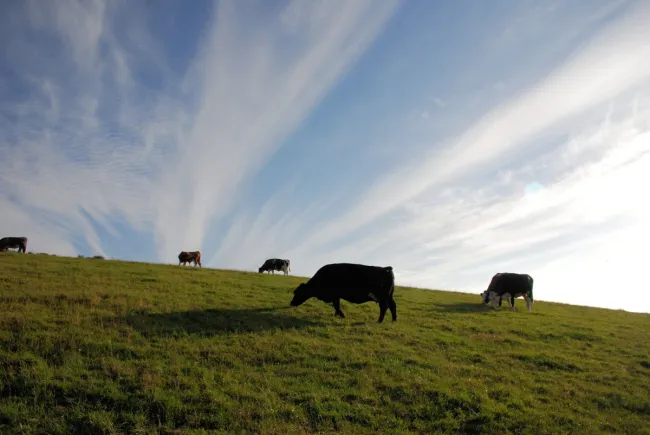This paper, by John Lynch of the University of Oxford’s LEAP project, finds that carbon footprint studies of beef cattle typically do not report separate values for emissions of different greenhouse gases such as methane and nitrous oxide. Instead, studies generally report only an aggregated figure in the form of the 100-year Global Warming Potential (GWP100) as CO2-equivalent.

This is problematic, the paper argues, because information is lost and the true climate warming impact of each greenhouse gas is not fully represented by CO2 equivalent values.
Abstract
Agriculture is a significant source of anthropogenic greenhouse gas (GHG) emissions, and beef cattle are particularly emissions intensive. GHG emissions are typically expressed as a carbon dioxide equivalent (CO2e) ‘carbon footprint’ per unit output. The 100-year Global Warming Potential (GWP100) is the most commonly used CO2e metric, but others have also been proposed, and there is no universal reason to prefer GWP100 over alternative metrics. The weightings assigned to non-CO2 GHGs can differ significantly depending on the metric used, and relying upon a single metric can obscure important differences in the climate impacts of different GHGs. This loss of detail is especially relevant to beef production systems, as the majority of GHG emissions (as conventionally reported) are in the form of methane (CH4) and nitrous oxide (N2O), rather than CO2. This paper presents a systematic literature review of harmonised cradle to farm-gate beef carbon footprints from bottom-up studies on individual or representative systems, collecting the emissions data for each separate GHG, rather than a single CO2e value. Disaggregated GHG emissions could not be obtained for the majority of studies, highlighting the loss of information resulting from the standard reporting of total GWP100 CO2e alone. Where individual GHG compositions were available, significant variation was found for all gases. A comparison of grass fed and non-grass fed beef production systems was used to illustrate dynamics that are not sufficiently captured through a single CO2e footprint. Few clear trends emerged between the two dietary groups, but there was a non-significant indication that under GWP100 non-grass fed systems generally appear more emissions efficient, but under an alternative metric, the 100-year global temperature potential (GTP100), grass-fed beef had lower footprints. Despite recent focus on agricultural emissions, this review concludes there are insufficient data available to fully address important questions regarding the climate impacts of agricultural production, and calls for researchers to include separate GHG emissions in addition to aggregated CO2e footprints.
Reference
Lynch, J., 2019. Availability of disaggregated greenhouse gas emissions from beef cattle production: A systematic review. Environmental Impact Assessment Review, 76, pp.69-78.
Read the full paper here. See the paper Climate impacts of cultured meat and beef cattle from the same author. See also the Foodsource resource Carbon footprinting is based on the LCA approach but focuses only on greenhouse gas emissions.




Comments (0)